Portraits That Strike a Chord
Lighting 3D art at home with a single battery-powered LED.
• June 2021 issue
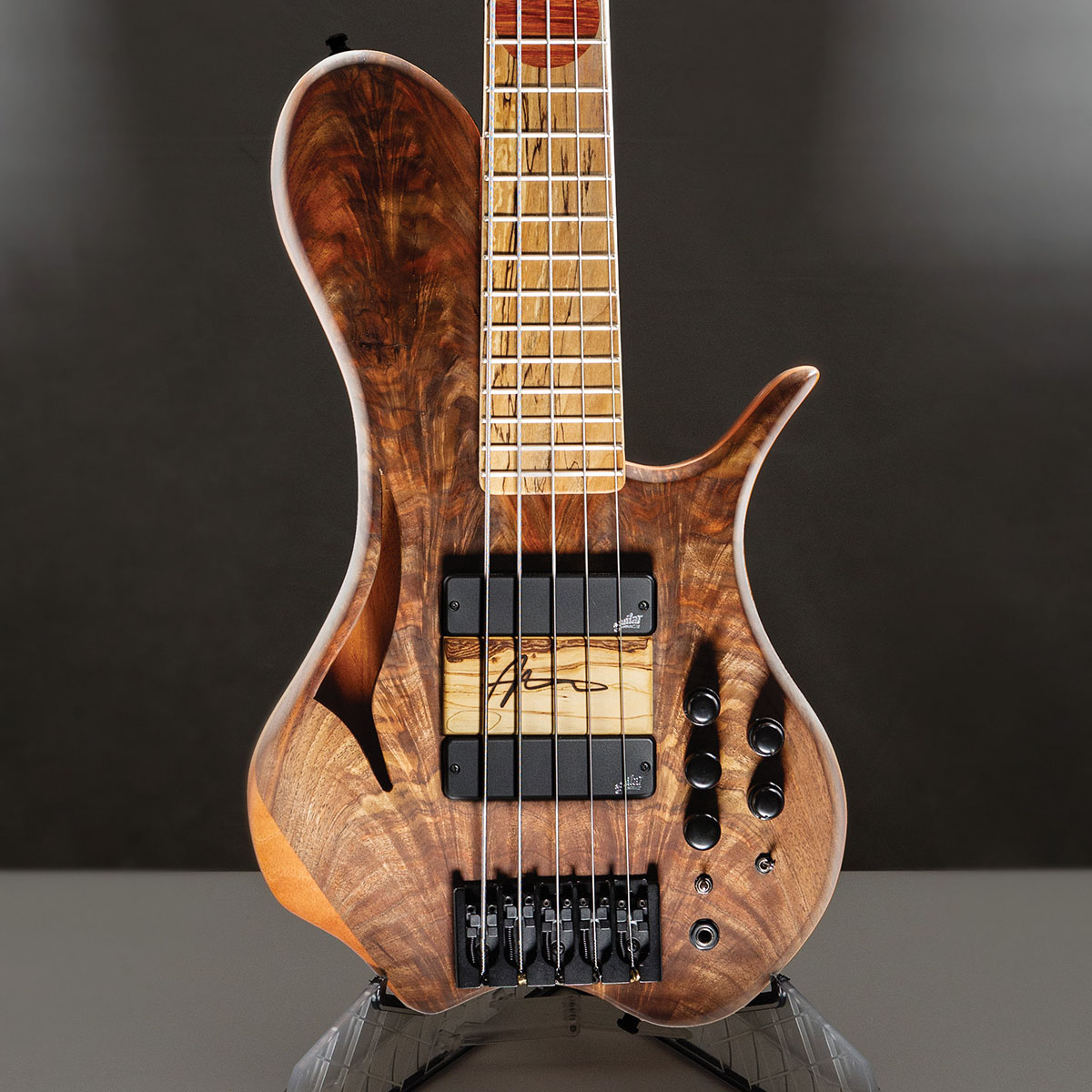
For me, there’s always been an inescapable connection between photography and music. Although I had a career in music before I ever picked up a camera, a passion for album art, concert photography, and magazine covers inspired me to capture unique personalities through the lens. Early on, I would drag willing (and sometimes less-than-willing) subjects into the garage to make their portraits even before I was able to afford lighting gear.
Years later, my appetite for composition, storytelling, design, and music led me to the same garage where I’d once practiced headshots and lighting, this time to expand my craft into mixed media and woodworking. My art came full circle when my love of sawdust evolved into a fascination with bass and guitar building. Countless hours spent studying photography, lighting, and post-production have proven invaluable not only in my design process but also in marketing my own instruments.
Great musical instruments become like old friends, and many of them earn names. My process for instrument making starts with a name and a concept around which the build revolves. Most of my pieces are tributes to people. Clyde is a bass fashioned from a pecan tree in Texas that was used to make pecan pies through generations, resonating with the memory of my father-in-law patiently shelling the nuts by hand. Wesley is made from an apricot tree gifted to me after its lifetime of feeding a family through difficult days in the Soviet Union. The stories go deep and come alive when music is created through the instruments’ strings. Conveying these concepts in a photograph is challenging and rewarding.
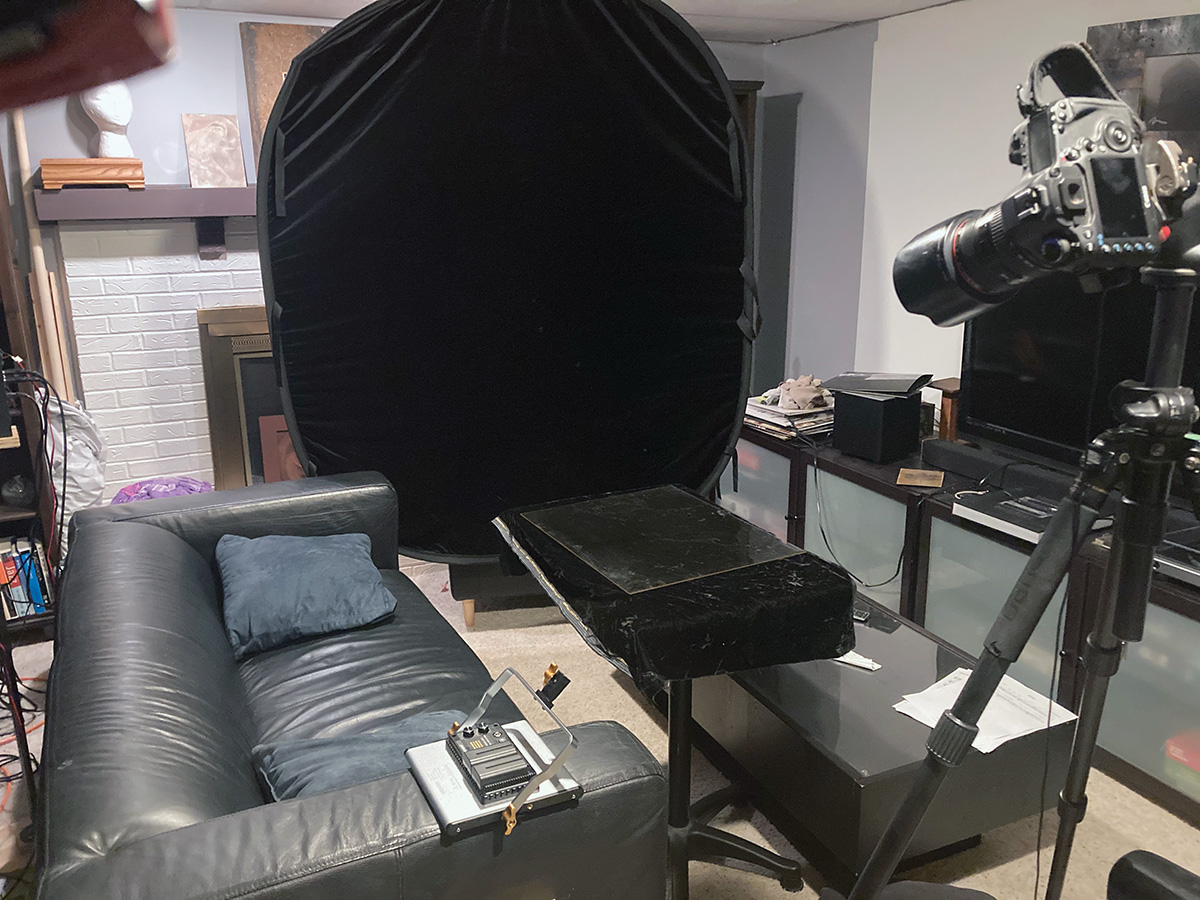
Forgoing the overhead of a studio, Barton found that he could achieve beautiful lighting for his instruments with minimal gear.
SETUP
When I began to explore mixed media, woodworking, and alternative finishing techniques, I decided to run my business without a studio so I could work on new ideas without the confines of overhead expenses. Admittedly, I was burned out and needed a change. Soft boxes and lighting gear are amazing in a studio but are impractical in a small room overflowing with instruments and music gear. Partly through necessity and partly from lack of desire to rearrange an already tight space, I began to photograph on my coffee table with a backdrop of a bed sheet clipped to the ceiling tiles. My sophisticated lighting rig was replaced by a single inexpensive battery-powered LED that I almost exclusively hand hold.
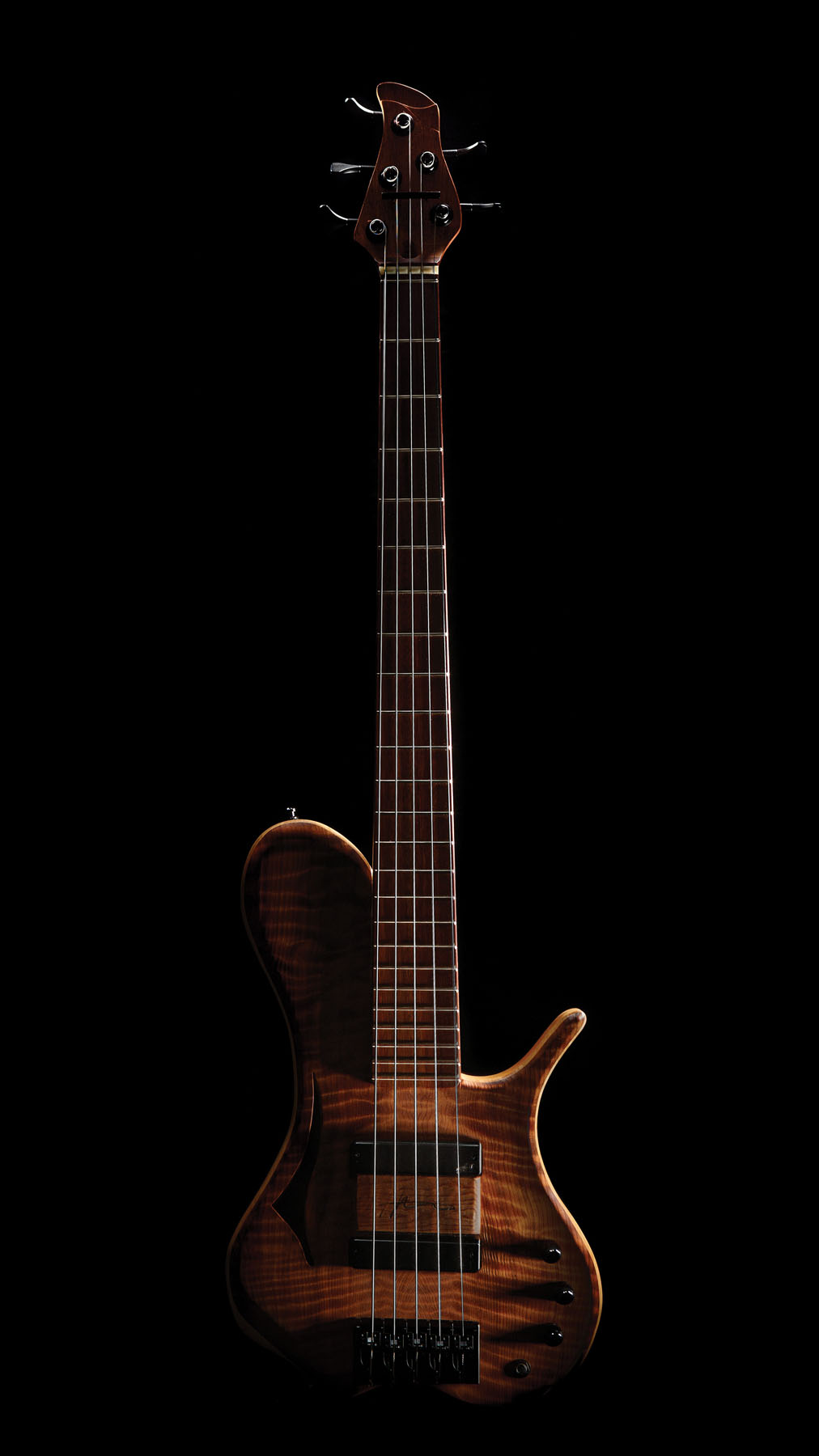
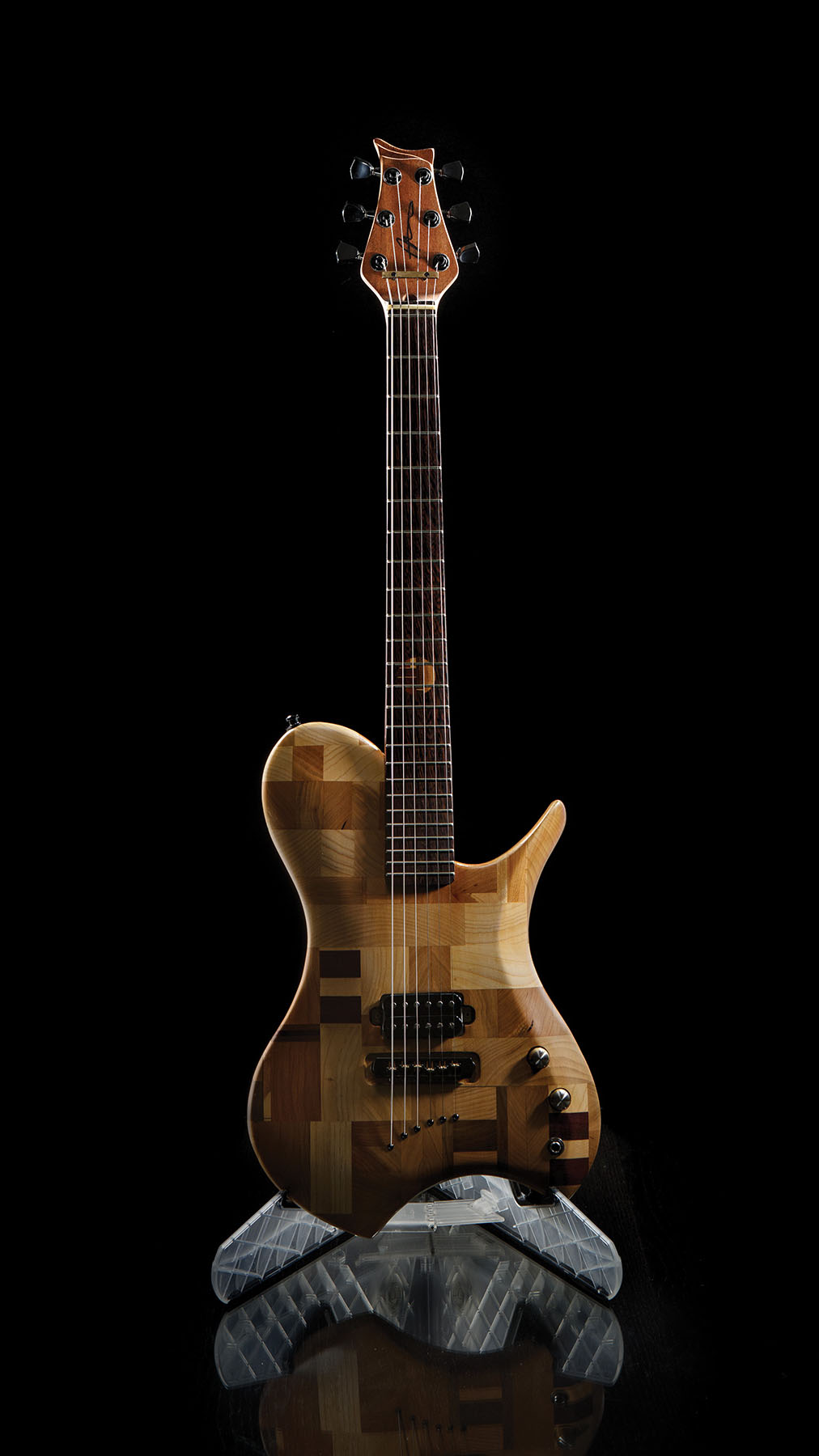
TECHNICALITIES
For commercial assignments, I meticulously light specific elements to accent details important to the brand. With my own pieces I have the advantage of an intimate knowledge of what I want to capture. There is the added pressure to uphold my reputation as both an instrument builder and a photographer. LEDs and Adobe Photoshop have given me the versatility to blend frames and create images that would be impossible to get in a single capture while also making it possible to create a wide range of images that serve different functions. A buyer will want to see an accurate and clean representation of the instrument, yet a more stylized image will grab attention on social media. It’s rewarding to know that a polished image can be created in such a minimalist manner.
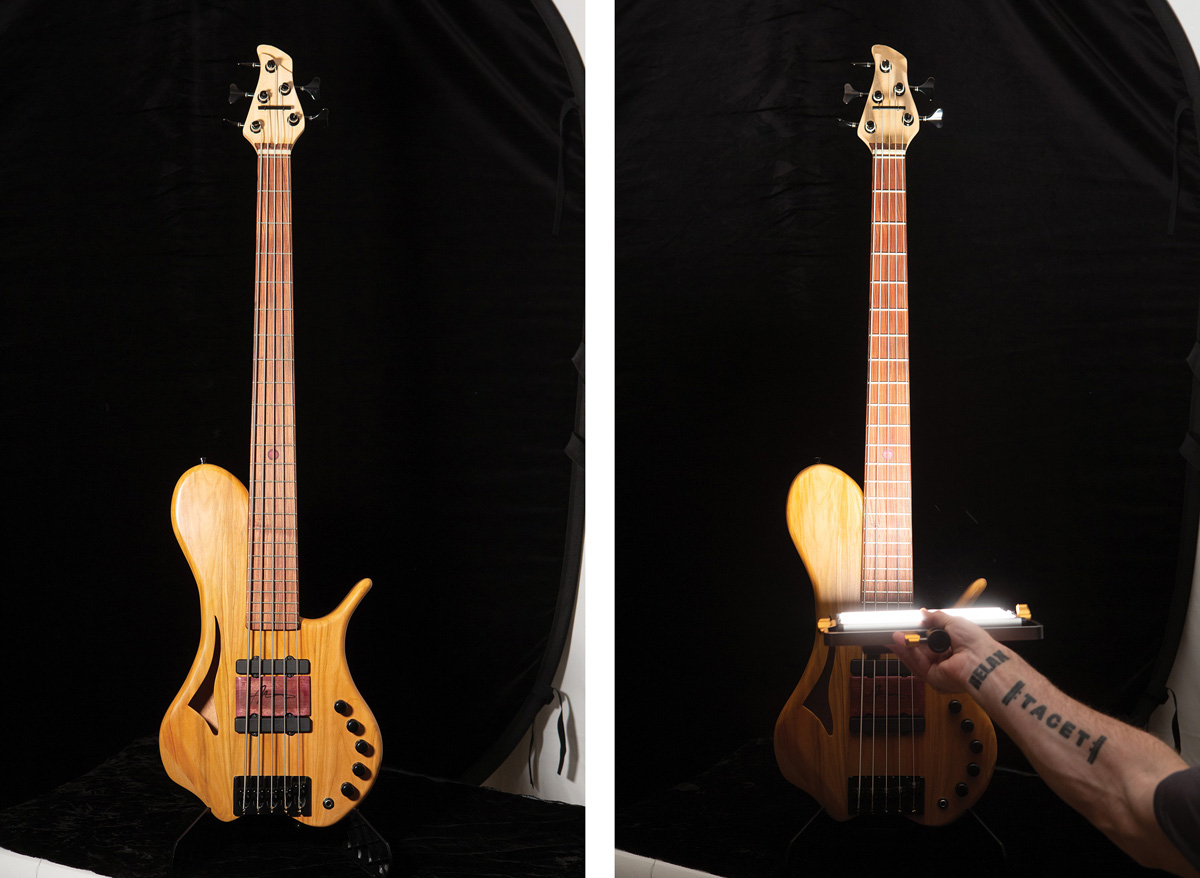
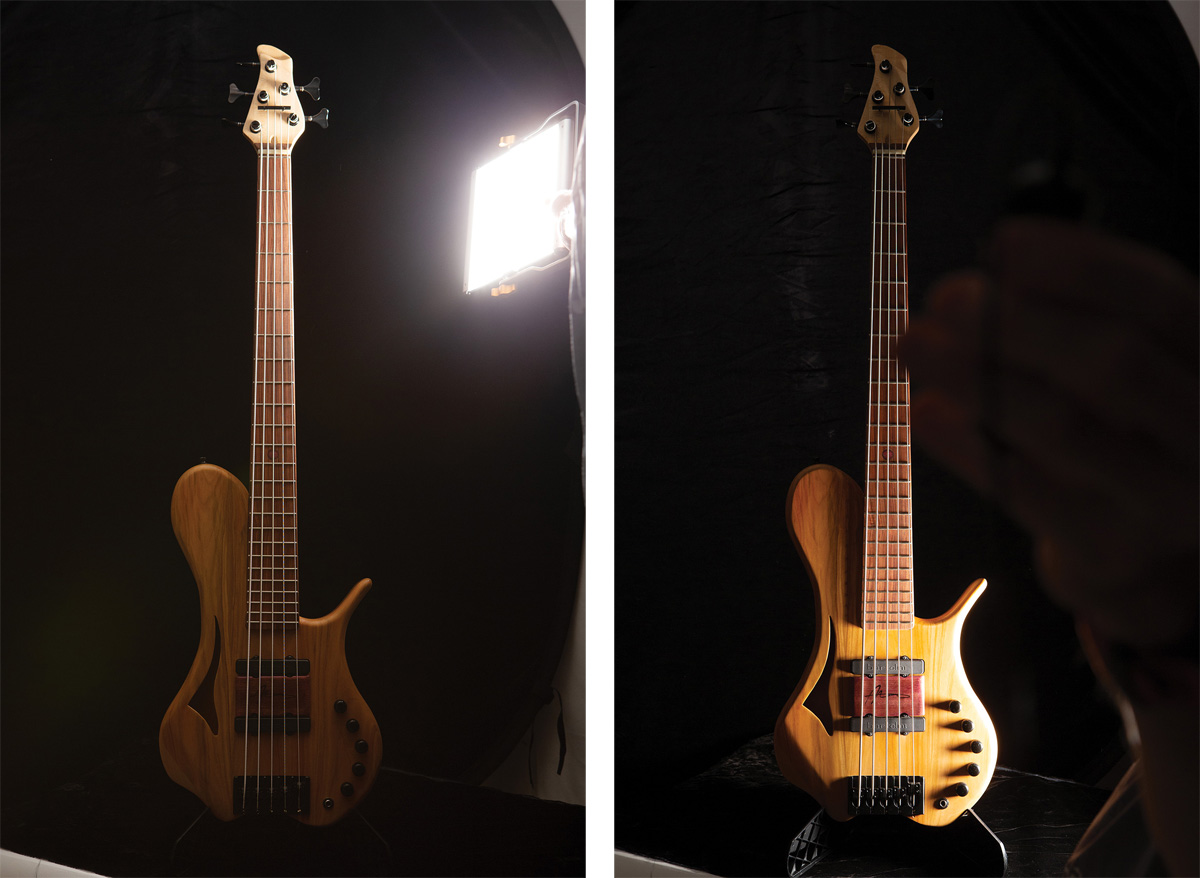
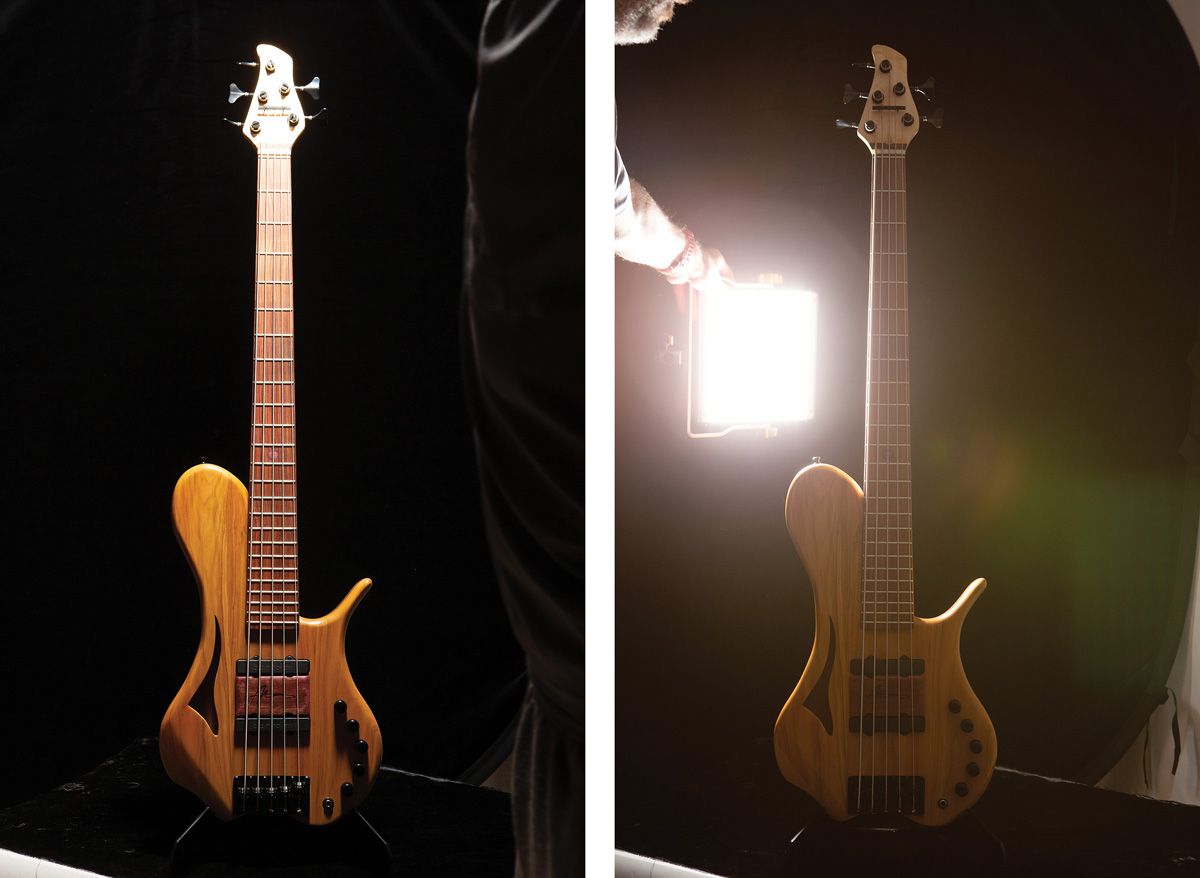
LIGHTING
Some of these images are composites of 20 or more frames. It’s vital that the instruments are stable because any movement or shift in position makes the composition nearly impossible to edit. Problems compound quickly. Shapes and contours are sculpted into each design, and these lines require sharp lighting angles and contrast. It’s easy to make a mistake and have to start over. I use a tripod with a cable release; everything is set to manual, including focus, to limit movement. Changing the aperture would not just change the depth of field and compromise the final image; touching the camera would create small movements and make it impossible to line up the images in post. I frequently end up in the images, as does the cord to the cable release, but that’s OK because only small pieces of each frame are being used in the final composite. In short, I overshoot and don’t move anything. The bottom layer is usually lit with minimal contrast and underexposed to give me something to build on. If it’s too bright the accent lights don’t have anywhere to go, and it’s just a flat mess without depth. I also create a flat image with an ideal exposure that I can blend in later.
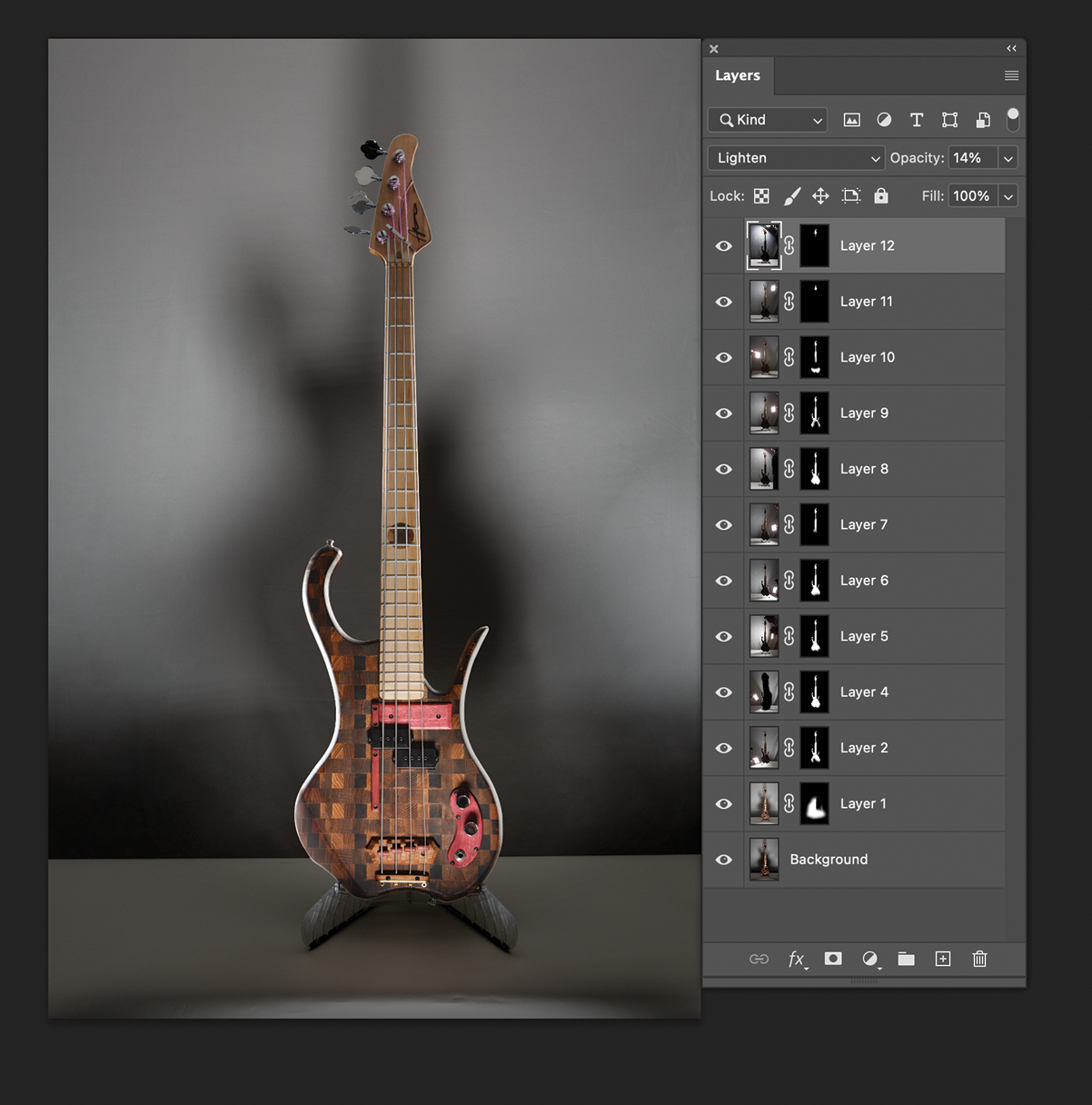
The composite is created through masking in the desired lighting while masking out any undesired elements and using the Lighten blending mode for each layer before flattening the image.
POST-PRODUCTION
Setting up the final image is as simple as choosing the right frames and stacking them into layers in Photoshop. Since the lighting is the only aspect changing with each layer, it’s simply a matter of masking in the areas being accented and masking out inadvertent selfies, cable releases, or coffee mugs that were carelessly left on the table. Using the lighten blending mode for each layer saves hours of editing time.
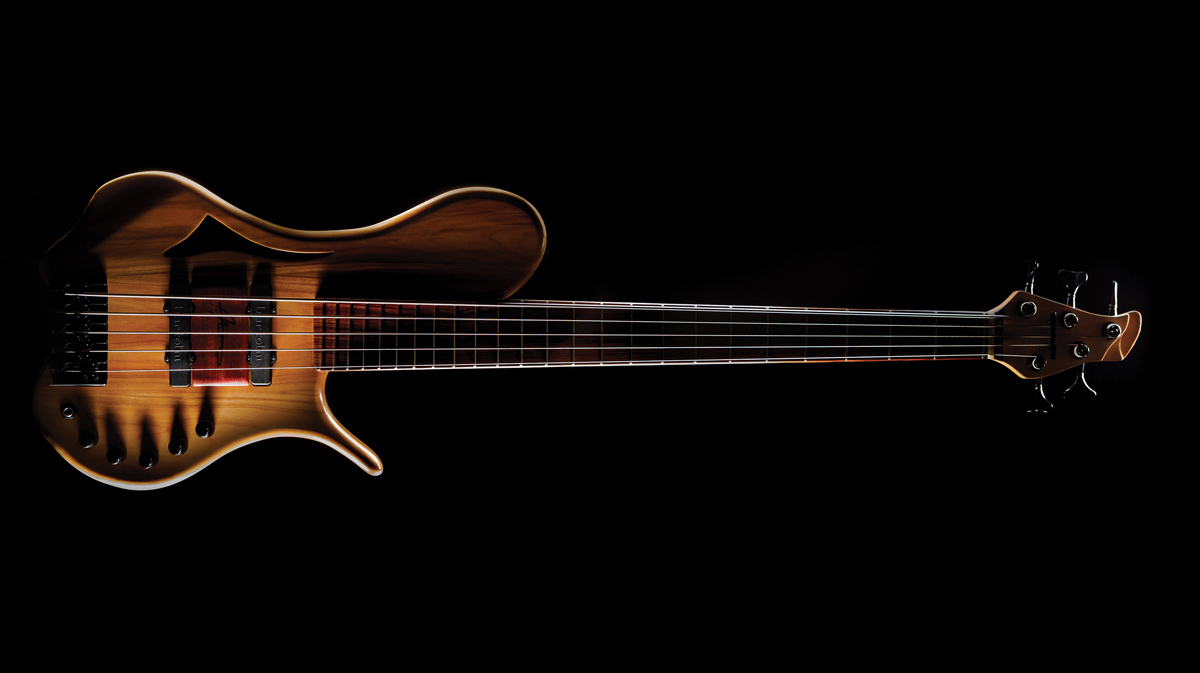
This finished composite of Wesley was created with 16 images.
NOD TO THOM
One of the final steps in the process is to follow something that my mentor and friend Thom Rouse, M.Photog.MEI.Cr., F-ASP, taught me years ago: Flatten the image and treat it like it came straight out of camera. Editing can be achieved in a flattened image that would be tedious in layers. By working with a single image, I’m able to use portrait retouching techniques I’ve been using for years. In the end, it’s not about the process, technical steps, or lighting. The image is about sharing a portrait of my new friend.
Michael Barton is a bass and guitar builder and visual artist based in North Aurora, Illinois.

